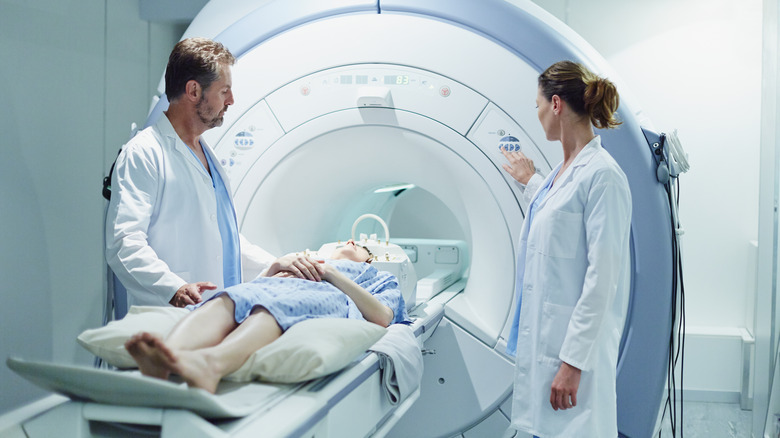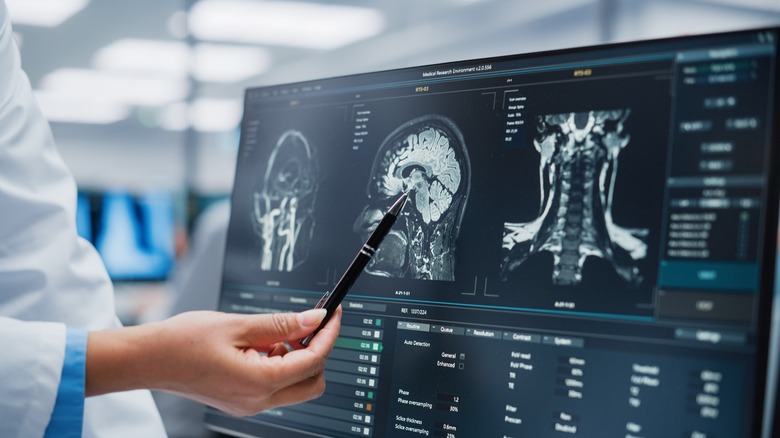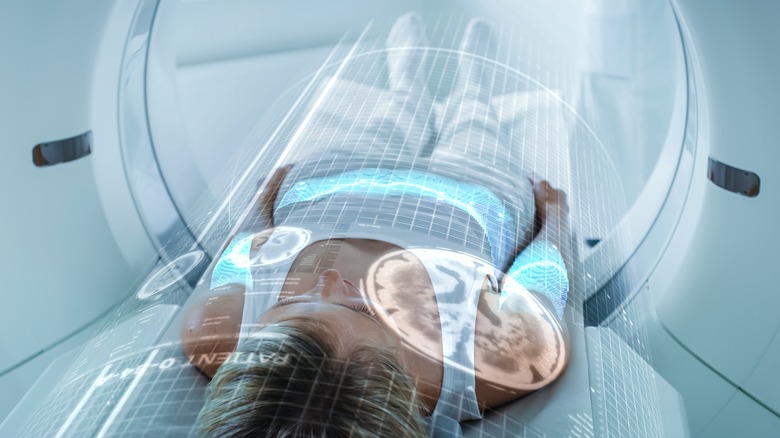The MRI Machine Is An Engineering Marvel That Continues To Evolve
In the last generation or two, technology has advanced to an almost unimaginable degree. In our hospitals, things have come a very long way indeed. X-rays, chemotherapy, ultrasound, and other pioneering treatments continue to help arm us against disease, and most patients don't have a very in-depth knowledge of just how incredible these treatments are. The MRI machine, in particular, really is a marvel of technology.
Here's a closer look at the history of this intimidating device, how it works beneath that vast, enigmatic body, and the potential future of the technology that powers it.
Magnetic Resonance Imaging does exactly what it says on the tin: two magnetic fields within the machine cause the atoms of the body to resonate. The switch from one field to the other, when they're being manipulated, makes the protons of the hydrogen atoms (which are highly magnetic themselves) perform a simultaneous movement from one pattern to another. It's this that the machine is able to visualize, through the radio waves generated by the change. The result is an in-depth view of the portion of the body being scanned, made clearer by the fact that the reaction is different, and so the visualization is different, between types of tissue.
The birth of the MRI machine
X-ray machines, in comparison, are rather less complex. Here, X-ray radiation is passed through the body, and the degree to which internal structures absorb them affects how clear different elements of the resultant image are (which is why bones are so prominent in X-rays). MRI scans don't use any such radiation, and by their very nature, are particularly sophisticated.
They provide a clearer view of the brain and other delicate elements like the nervous system than other diagnostic options like X-rays can offer, and though there are concerns such as the noise level (as intense as 120 decibels in some cases) and the strength of the magnets, these can generally be controlled and mitigated.
It was Doctor Raymond Damadian who performed the first MRI scan on a human. Using rats as case studies, he found that nuclear magnetic resonance could be used to detect cancer cells because they didn't react as quickly, and so appeared differently, on being scanned. Equipped with this knowledge and seeing the life-saving potential of such a device in a medical setting, he patented the notion of an MRI machine in 1974. Three years later, colleague Larry Minkoff was the subject of the first such scan. The doctor's debut device was named Indomitable. The next year, his FONAR corporation began developing and selling more MRI machines.
A partially portable future?
In the decades that followed, new techniques were developed and added to the MRI arsenal. As Alan P. Koretsky reports in the study "Early Development of Arterial Spin Labeling to Measure Regional Brain Blood Flow by MRI". The 1980s marked the beginning of the development of arterial spin labeling, which allows the user to determine the level of blood flowing through the brain.
Such delicate processes, in turn, have allowed these marvelous machines to detect, track, and aid in the treatment of all manner of conditions.
The unwieldy and impractical nature of the MRI machine is really its only drawback, but more recently, steps have been taken to help address this too. In February 2020, Hyperfine Research Inc. lifted the lid on what it called "the world's first bedside Magnetic Resonance Imaging (MRI) system". At a fraction of the size, price, and energy-guzzling capacity of familiar systems, it can be controlled by a tablet and plugged into a simple mains outlet.
Hyperfine Research's Jonathan Rothberg declared that the company had made use of the "10 million-fold improvement in computing power since MRI was invented ... and built something astonishing, something disruptive." In making this wondrous technology more widely available, the capacity of MRI may continue to advance further as it becomes more accessible. Perhaps AI's increasing influence in the healthcare sector could play a part too.


